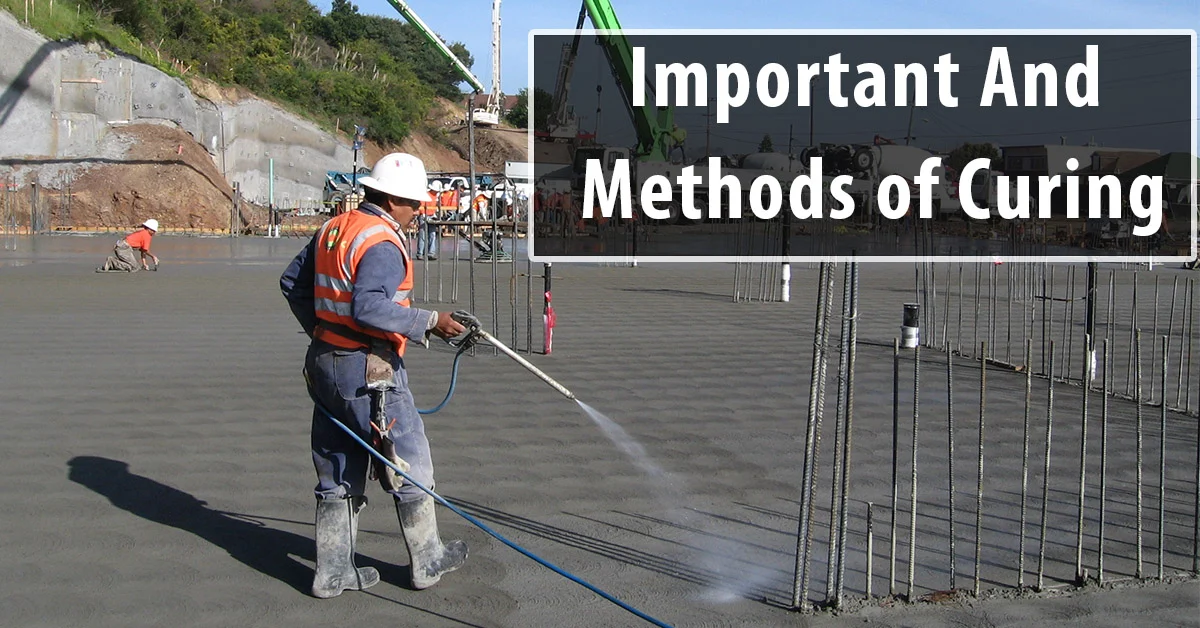Important And Methods of Curing

Curing is essential for durability, and is carried out to retain heat and prevent drying.
Curing has two distinct functions:
1. To stop the concrete from drying out during hydration. If this occurs, there will be a significant loss of durability. The damage is normally irreversible. If concrete is dried, the cement grains will form an impermeable layer of hydration product around them, and this will prevent any further hydration, however many times it is wetted again.
2. To retain heat at the surface.
This may be done for the following reasons
a. To prevent frost damage (below 5°C, 40°F)
b. To increase early strength
c. To reduce temperature gradients
While low temperatures will reduce early strength, the effect is not permanent if the concrete has not frozen, and it is subsequently kept at higher temperatures. Thus, a sample that is kept at 5°C (40°F) will not fully hydrate (particularly if it contains a pozzolan), but even after several months it will hydrate further when the temperature is raised.
Because they hydrate more slowly, cements containing pozzolans and GGBS generally require longer curing. It is therefore essential that these concretes are identified on site, and cured adequately.The pozzolanic reaction will then create additional hydration products that can block some of the pores between the cement grains, and achieve good durability.
Some methods of curing are:
• Wrap elements (e.g., columns) in polythene after removing shutters.
• Spray with curing membrane after removing shutters.
• Cover slabs with polythene (and pour ground slabs on polythene).
• For heat retention, use polystyrene on the back of shutters (especially, steel ones).
• Simply leaving shutters in place for a few extra days (especially wooden ones).
• 50 mm of sand can work on slabs.
• Ponding (i.e., forming a pool on the concrete surface) is by far the most effective.
Note about curing:
• Curing is not usually priced as a separate item – this does not mean that no money may be spent on it.
• Make sure that curing is applied as soon as possible. A few hours may make a substantial difference.
• Spray-on curing membranes are not very effective, and in windy conditions they are often useless.On difficult areas (such as columns) they may, however, be the only option.
• Remember that PFA, GGBS and, especially, CSF need much better curing (often 5 days, rather than 3 days).
• Permitting the bleed water to dry off will encourage more bleeding, and plastic cracking.
• Slabs on ground should have a polythene sheet placed under them, to prevent excessive water absorption by dry soils.









